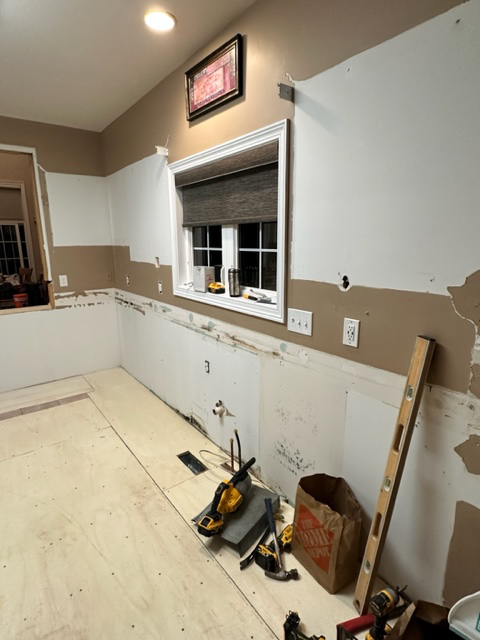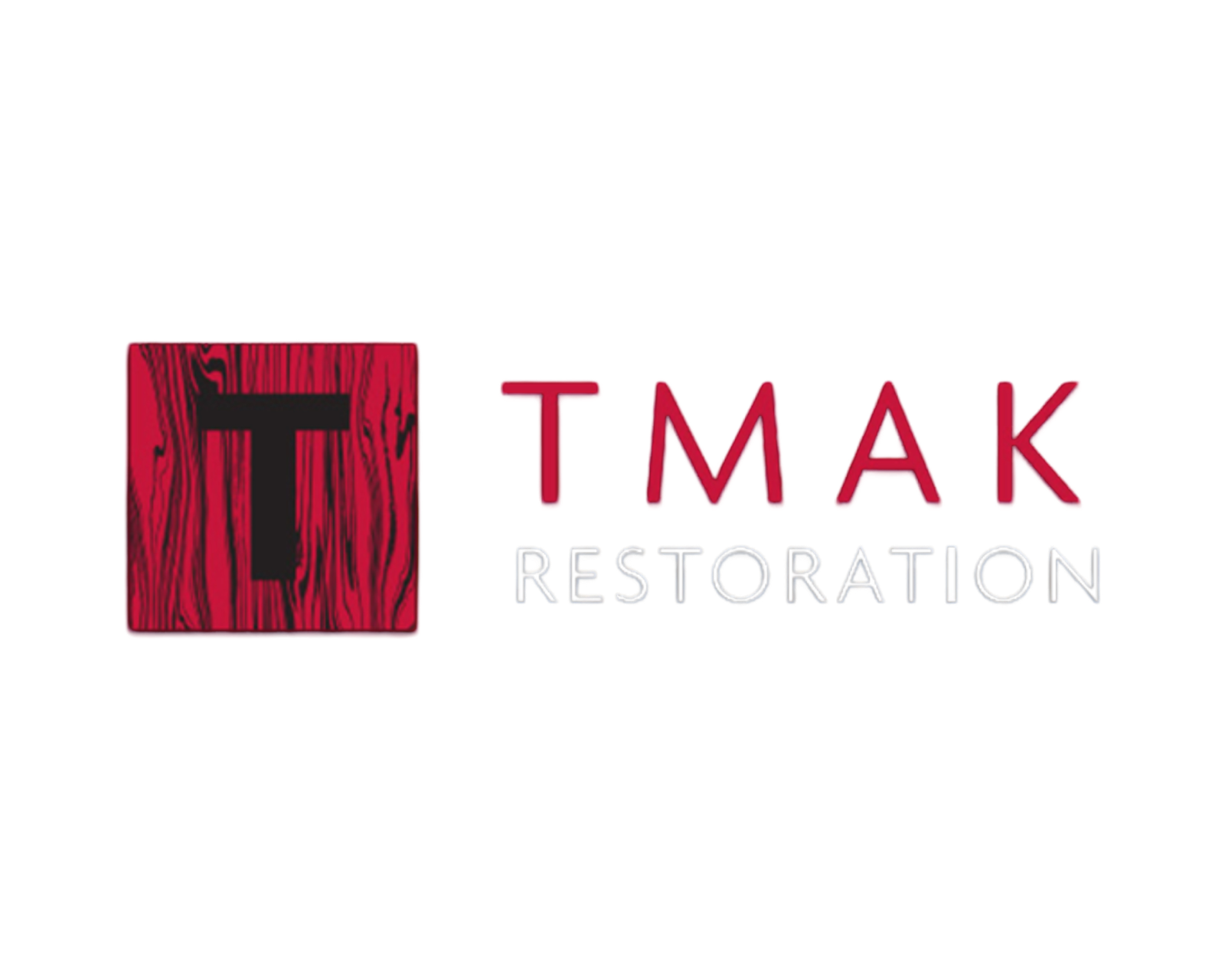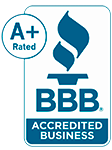The Hidden Threat: Why Water Damage Isn’t Always Easy to Spot
Water damage is one of the most common and costly issues homeowners face, but it isn’t always visible. While obvious signs like puddles, water stains, and warped floors scream for attention, hidden water damage can silently wreak havoc behind walls, under floors, and inside cabinetry—sometimes for months before it’s noticed.
Unfortunately, by the time you see visible symptoms, structural damage or mold may already be well underway. In many cases, the extent of damage uncovered during inspection leads homeowners to consider a full or partial kitchen remodel—not only to repair what’s been compromised, but to upgrade and better protect the space against future issues. In this blog post, we’ll explore where hidden water damage tends to occur, the subtle signs you might be missing, and how restoration professionals detect and resolve water issues before they become major problems.

Why Hidden Water Damage Is So Dangerous
Water has a sneaky way of infiltrating the most unexpected places. Whether from a slow leak under the sink, faulty seals around windows, or a roof issue that lets in rain, hidden moisture can saturate building materials without any immediate indication.
Over time, this leads to serious consequences:
- Mold growth (which can begin within 24–48 hours)
- Rotting wood and compromised framing
- Warped drywall and crumbling plaster
- Electrical hazards if water reaches wiring
- Pest infestations drawn to damp areas
By the time visible damage appears, the repair bill can skyrocket. That’s why identifying and addressing water damage early—especially when it’s hidden—is crucial.
Common Places Where Hidden Water Damage Occurs
Behind Walls
Water pipes that run inside walls are one of the most common culprits for hidden leaks. Even a small, slow leak behind drywall can soak insulation, lead to rot, or invite mold before anything is noticed on the surface.
Under Floors
Appliances like dishwashers, washing machines, or refrigerators can leak over time. If you’re planning a kitchen remodel, this is a great opportunity to inspect for hidden leaks under appliances and ensure new flooring materials are water-resistant.
Inside Cabinets and Vanities
Cabinets beneath kitchen and bathroom sinks are often hiding spots for leaks from supply lines or drains. If you store cleaning products there, the leak may go undetected behind bottles or towels.
In Attics and Ceilings
Roof leaks may drip into attic insulation or ceiling cavities long before water stains appear. During storms or snow melts, these leaks can be active without your knowledge.
Behind or Beneath Appliances
Refrigerators with ice makers, water heaters, and HVAC systems can all leak slowly. Because these are often tucked into corners or utility closets, small drips can go unnoticed.
Subtle Signs You May Be Missing
Even if you can’t see water, your home might be showing early warning signs of hidden damage. Keep an eye out for these clues:
Musty Odors
A persistent damp or musty smell—especially in bathrooms, kitchens, basements, or closets—is one of the clearest indicators of hidden moisture. Mold and mildew often emit a noticeable scent before they become visible.
Sudden Increases in Utility Bills
If your water bill jumps unexpectedly, you might have a hidden leak somewhere in your plumbing system, even if no puddles or dripping sounds are present.
Peeling Paint or Bubbling Wallpaper
Moisture trapped inside walls can cause paint to lift, bubble, or peel away. This can happen long before the wall feels wet to the touch.
Warped Flooring or Baseboards
Warping, cupping, or separation in hardwood or laminate floors may be an indication of water damage below the surface. Baseboards that pull away from the wall can also signal water intrusion. If you’re seeing these signs in the kitchen, it may be time to inspect more deeply—or even consider a kitchen remodel that includes water-resistant flooring and upgraded plumbing.
Discoloration or Stains on Ceilings and Walls
While you might assume all stains are from past water damage, discoloration can grow over time as leaks worsen. A yellowish or brownish ring is a classic indicator of slow, ongoing moisture exposure.
Unexplained Mold Growth
Mold in unusual places—like a corner of a closet or behind furniture—might mean there’s moisture behind the wall or under the floor.
How Restoration Experts Detect Hidden Water Damage
Homeowners can sometimes identify early signs of water damage, but restoration professionals bring specialized tools and training to the job. Here’s how the pros uncover what the eye can’t see:
Moisture Meters
A moisture meter measures the percentage of water in materials like drywall, wood, or flooring. Restoration technicians use it to test areas of concern and compare them to normal levels. Elevated readings often indicate hidden leaks.
Thermal Imaging Cameras
Infrared cameras detect temperature variations that often indicate moisture pockets behind walls or under flooring. Wet areas cool down as water evaporates, creating a visible “cold spot” in the thermal image.
Borescope Cameras
These small cameras are inserted through tiny holes in drywall or ceilings to give a direct view inside enclosed spaces. They’re especially useful for inspecting wall cavities without large-scale demolition.
Hygrometers
Hygrometers measure the relative humidity in a room or specific area. Abnormally high humidity in one part of your home could be a clue that there’s a hidden moisture source nearby.
Pinpointing the Source
Professionals don’t just find the water—they find where it’s coming from. Whether it’s a leaky pipe, failing seal, or poorly sloped roof, they identify and stop the source before beginning the restoration.
The Restoration Process for Hidden Water Damage
Once damage is discovered, restoration experts follow a thorough process to return your home to a safe, dry state:
Stopping the Source
The first step is always fixing the cause—whether it’s plumbing, roofing, or appliance-related. No drying or repairs can begin until the leak is stopped.
Water Removal and Drying
- Any standing water is removed using industrial-grade pumps or vacuums.
- Dehumidifiers and high-speed fans are used to completely dry affected areas.
- Moisture levels are monitored continuously using meters and thermal imaging.
Mold Remediation (if necessary)
If mold is present or suspected, professionals will safely remove contaminated materials, treat surfaces with antimicrobial agents, and ensure all spores are eliminated.
Repair and Restoration
- Damaged drywall, flooring, cabinetry, or insulation is replaced.
- Painting, sealing, and refinishing restore the area to its pre-damage condition.
- In some cases, full remodels—such as a kitchen remodel—may be necessary depending on the extent of the damage and the need to upgrade to more durable materials.
Why Early Detection Saves Thousands
Ignoring subtle signs of water damage can lead to:
- Extensive structural damage
- Health problems from mold exposure
- Higher insurance deductibles or denied claims
- Longer, more expensive restoration projects
By catching the problem early—even before you can see or feel it—you can save thousands of dollars and avoid the stress of major home repairs. Early detection doesn’t just prevent damage—it can also help you make smarter long-term decisions when you remodel your kitchen, ensuring you’re not building over hidden issues that could resurface later.
When to Call a Professional
While it’s smart to stay alert to warning signs, it’s just as important to know when to call for help. Here’s when it’s time to bring in restoration experts:
- You notice persistent musty odors with no visible source
- Paint or flooring changes suggest moisture but feel dry to the touch
- You’ve had a past leak or plumbing issue and want to ensure it didn’t cause hidden damage
- You’re purchasing a home and want to verify it’s water-damage free
- You’ve spotted mold in more than one place or are concerned about hidden spores
Professionals have the training and tools to uncover damage without unnecessary demolition, helping you protect your investment and peace of mind.
Preventing Hidden Water Damage: What Homeowners Can Do
While some water damage is inevitable—especially due to natural disasters or unexpected plumbing issues—many instances of hidden water damage are preventable with routine maintenance and awareness. Proactive homeowners can save thousands in restoration costs by taking a few preventative steps.
Conduct Regular Inspections
Make it a habit to inspect key areas of your home regularly:
- Under sinks, especially in kitchens and bathrooms, for any signs of moisture, corrosion, or musty smells.
- Behind appliances like dishwashers, washing machines, and refrigerators with ice makers.
- Attics and basements after heavy rain or snow melts, looking for damp insulation, discoloration, or pooling water.
- Around windows and doors, checking for deteriorated seals or soft spots in wood trim.
- During a kitchen remodel, consider inspecting behind walls and under flooring for signs of previous leaks or damage, especially near plumbing fixtures.
Catch issues early before they have a chance to spread into unseen areas.
Maintain Your Plumbing
Have a plumber inspect your home’s plumbing system annually—especially if your home is older. Replacing old galvanized steel or polybutylene pipes can prevent future leaks. Install water pressure regulators to prevent stress on pipes and fittings, and consider replacing plastic supply lines with braided stainless steel alternatives. If you’re already planning a kitchen remodel, replacing old pipes and fixtures as part of the project can help prevent future water damage and add long-term value.
Use Smart Home Technology
Smart water sensors placed near toilets, under sinks, and behind appliances can send alerts directly to your phone if moisture is detected. Some advanced systems can even shut off your water supply automatically to prevent flooding. For frequent travelers or those with second homes, this extra layer of protection is invaluable.
Know Your Limits
If you suspect a minor leak, don’t wait for visible damage to appear. Call a professional for a moisture inspection before assuming everything is fine. The sooner you act, the more you’ll save.
Hidden Water Damage and Home Value: What Buyers and Sellers Should Know
Water damage—especially when hidden—can significantly impact your home’s resale value and complicate real estate transactions. Whether you’re preparing to sell or shopping for your next home, it’s important to understand how hidden water damage fits into the picture.
Sellers: Disclose and Repair Honestly
Home sellers are often legally required to disclose any known water damage—past or present. Trying to hide or ignore a water issue can backfire, leading to failed sales or legal consequences. If hidden damage is discovered during an inspection, your best move is to fix it professionally and keep documentation to reassure buyers the problem was resolved correctly.
Buyers: Look Beyond the Surface
When touring homes, don’t be afraid to:
- Open cabinets under sinks. If you’re investing in a kitchen remodel to increase resale value, be sure to address any hidden water damage beforehand to avoid issues during buyer inspections.
- Look for signs of patchy paint or ceiling stains
- Check for uneven floors or baseboard warping
- Ask if the seller has installed any moisture detection systems
Hiring a home inspector with thermal imaging capabilities can uncover moisture you can’t see, helping you avoid buying a future headache.
Impact on Value
Undiscovered water damage can lead to costly negotiations, price reductions, or even canceled contracts. On the flip side, a home with a history of water damage that has been properly restored and upgraded with water-resistant materials can retain or even increase its value.
For both buyers and sellers, transparency and professional inspections are key to making informed decisions and protecting your investment.
Don’t Let Hidden Water Damage Stay Hidden
Water damage doesn’t always announce itself with a flood or a burst pipe. Sometimes, it seeps quietly behind your walls, under your floor, or inside your cabinets—causing damage you won’t see until it’s too late.
By learning the subtle signs of hidden water damage and understanding how professionals detect and resolve it, you can take proactive steps to protect your home, health, and finances.
If you suspect hidden water damage or simply want peace of mind, don’t wait. Early detection is the key to avoiding costly repairs and ensuring your home stays safe, dry, and structurally sound. If you’re considering a kitchen remodel, it’s the perfect time to assess for hidden water damage and ensure your renovation starts with a solid, dry foundation.



